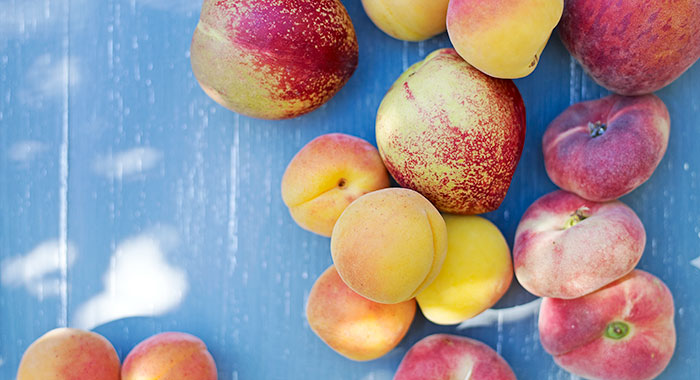
Pronounce it: ay-pree-kot
A relative of the peach, nectarine, plum and cherry, apricots are fragrant, with a soft, velvety skin that ranges from pale yellow to deep orange. Inside there’s a large kernel that will fall out easily if the flesh is ripe.
Apricots need a warm climate to thrive – in the summer most come from hot European countries, and there’s also a short winter season for apricots grown in Chile and South Africa.
Availability
The British apricot season is from May to September.
Choose the best
An apricot’s colour is not always a reliable guide to flavour, but steer clear of very pale varieties, and always avoid wrinkled or blemished skins. The flesh should feel moderately firm with some give.
Prepare it
Halve by running a blade around the kernel following the line of the fruit’s natural dimple, then gently twist apart and flip out the stone. Brush the cut sides with lemon juice to prevent the flesh from discolouring.
Store it
At room temperature if not completely ripe (they’ll ripen in a day or two in the fruit bowl), otherwise in the fridge.
Cook it
In tarts and crumbles; poached and served with double cream; or use to make jam, compote or chutneys.
Alternatives
Try peach or nectarine.
Be the first to comment on "Apricot"